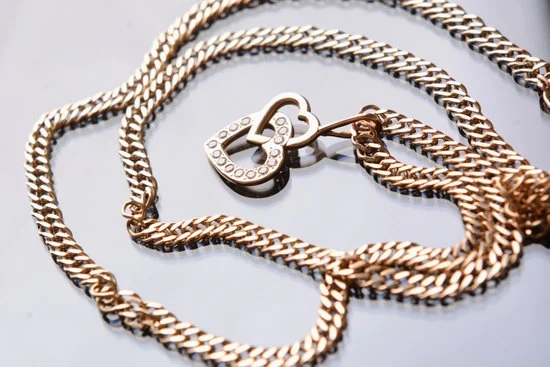Are you a talented jewelry maker wondering how to sell your handmade jewelry to stores? With the increasing demand for unique and artisanal pieces, there has never been a better time to enter the market. Handmade jewelry has seen a surge in popularity as consumers seek one-of-a-kind pieces that reflect their individual style. This article will guide you through the process of selling your handmade jewelry to stores, from understanding market demand to expanding your business.
As more consumers appreciate the craftsmanship and personal touch of handmade jewelry, there is a growing market for unique, high-quality pieces. Understanding the demand for handmade jewelry is crucial in effectively positioning and selling your products to stores. By recognizing the value customers place on authenticity and individuality, you can tailor your collection to meet these preferences and stand out in the market.
Creating a unique and marketable collection is essential for success in selling handmade jewelry to stores. From design inspiration to material selection, every aspect of your collection should reflect your creative vision and resonate with potential customers. By focusing on craftsmanship, quality, and creativity, you can develop a compelling line of jewelry that appeals to both retailers and their customers.
Understanding the Market Demand for Handmade Jewelry
The demand for handmade jewelry has been steadily growing in recent years, as consumers are increasingly looking for unique and one-of-a-kind pieces to add to their collection. Handmade jewelry offers a level of artistry and craftsmanship that mass-produced jewelry simply cannot match, making it an appealing choice for many customers. As a result, there is a significant market opportunity for artisans and jewelry makers to sell their handmade pieces to stores.
To successfully sell your handmade jewelry to stores, it is crucial to understand the current market demand and trends. Conduct thorough market research to identify what styles, materials, and designs are popular among consumers.
Pay attention to fashion magazines, online platforms like Etsy and Pinterest, as well as local craft fairs and artisan markets to gauge the preferences of potential customers. By identifying these trends, you can tailor your collection to meet the current demands of the market and increase your chances of selling your jewelry to stores.
In addition, consider conducting surveys or reaching out directly to potential customers to gather feedback on your designs. Understanding what resonates with your target audience will allow you to create a unique and marketable jewelry collection that aligns with their interests and preferences.
| Market Demand | Handmade Jewelry |
|---|---|
| Growing demand for unique and one-of-a-kind pieces | Appeals to consumers seeking artistry and craftsmanship |
| Market Research | Identify popular styles, materials, and designs |
| Trends | Pay attention to fashion publications, online platforms, craft fairs, and artisan markets |
| Customer Feedback | Gather input on designs from potential customers |
Creating a Unique and Marketable Jewelry Collection
When it comes to selling your handmade jewelry to stores, having a unique and marketable collection is essential. Stores are always on the lookout for new and innovative products to offer their customers, so it’s important to stand out in the crowded market of handmade jewelry. Here are some key strategies for creating a collection that will catch the eye of store owners and ultimately sell well in retail settings.
Identify Trends and Gaps in the Market
Before you start designing your jewelry pieces, take some time to research current trends in the fashion and jewelry industry. Look for gaps in the market that you can fill with your unique designs. For example, if there is a demand for sustainable or eco-friendly jewelry, consider incorporating those elements into your collection. By staying ahead of trends and offering something different, you’ll have a better chance of capturing the interest of store buyers.
Showcase Your Signature Style
It’s important to develop a cohesive brand and signature style for your jewelry collection. Whether it’s using certain materials, techniques, or design elements, having a distinct aesthetic will help set your collection apart from others. This could be anything from incorporating nature-inspired motifs or using unusual gemstones. By establishing a recognizable brand and style, store owners will be more likely to remember and consider your collection when making purchasing decisions.
Focus on Quality Craftsmanship
When selling handmade jewelry to stores, quality craftsmanship is key. Ensure that each piece of jewelry is well-made with attention to detail and durability. Store owners want to offer their customers high-quality products that will last, so investing time into perfecting your craft is crucial. Highlighting the craftsmanship behind each piece of jewelry can also serve as a compelling selling point when pitching your collection to stores.
By following these strategies for creating a unique and marketable jewelry collection, you’ll be better positioned to attract the interest of store owners and ultimately increase sales opportunities for your handmade jewelry business.
Researching and Identifying Potential Stores to Sell To
Identifying Your Target Market
Before you start approaching stores to sell your handmade jewelry, it’s important to identify the target market for your products. Understanding the demographics, preferences, and buying habits of your potential customers will help you pinpoint the types of stores that would be most interested in carrying your jewelry. Consider factors such as age, income level, and fashion style when determining the right retail outlets for your handmade pieces.
Researching Retailers
Once you have a clear picture of your target market, start researching retailers that cater to that demographic. Look for specialty boutiques, gift shops, and artisanal stores that align with the aesthetic and quality of your handmade jewelry. Take note of their location, customer base, and the types of products they currently carry. This research will not only help you identify potential stores but also tailor your sales pitch and presentation to each individual retailer.
Approaching Prospective Stores
After compiling a list of potential stores to sell to, it’s time to reach out to store owners or buyers. Craft a personalized email or letter introducing yourself and your handmade jewelry line.
Highlight what sets your collection apart from others in the market and why it would be a great fit for their store. Offering samples or lookbooks alongside your initial communication can showcase the quality and style of your jewelry and pique their interest in carrying your products.
By thoroughly researching and targeting retail outlets that align with your brand and product offering, you can effectively increase the chances of successfully selling your handmade jewelry to stores.
Crafting a Compelling Sales Pitch and Presentation for Store Owners
- Know Your Audience: Before approaching a store owner, do thorough research on the type of products they currently carry, their target demographic, and their overall aesthetic. This will allow you to tailor your pitch and presentation to align with their specific needs and preferences.
- Highlight Unique Selling Points: Clearly communicate what sets your handmade jewelry apart from other options in the market. Whether it’s the use of ethically-sourced materials, a distinctive design aesthetic, or a compelling brand story, emphasize what makes your collection unique.
- Showcase Your Best Pieces: When presenting your jewelry collection, be sure to showcase a curated selection of your best and most representative pieces. Provide store owners with a glimpse of the range of styles, materials, and price points available in your line.
- Offer Wholesale Benefits: In addition to highlighting the beauty and quality of your jewelry, make sure to also discuss the wholesale terms and benefits that you can offer to the store. This can include competitive pricing, flexible ordering options, and any promotional support or displays that you can provide.
Remember that building a successful partnership with store owners requires professionalism, confidence, and preparation. By effectively crafting a compelling sales pitch and presentation tailored to each potential retail partner, you can significantly increase the chances of getting your handmade jewelry into stores.
Setting Competitive Pricing and Wholesale Terms
When it comes to selling your handmade jewelry to stores, setting competitive pricing and wholesale terms is crucial for both your profitability and the success of your partnership with retailers. Here are some key steps to consider when determining your pricing and terms:
1. Calculate Your Costs: Before setting a wholesale price for your jewelry, you need to have a clear understanding of all the costs involved in making each piece. This includes the cost of materials, labor, packaging, shipping, and any overhead expenses such as marketing or website maintenance.
2. Determine Your Profit Margin: Once you have a comprehensive understanding of your costs, you can then decide on a fair profit margin for your wholesale prices. Typically, handmade jewelry makers aim for a 50% profit margin, but this can vary depending on factors such as brand recognition and market demand.
3. Research Market Prices: It’s important to research the pricing of similar handmade jewelry in the market to ensure that your wholesale prices are competitive. Look at other brands selling to similar stores and see how their pricing compares with yours.
4. Establish Wholesale Terms: In addition to pricing, you’ll need to determine the terms under which you’ll sell your jewelry to stores. This includes minimum order quantities, payment terms (such as whether you require a deposit or offer net-30 payment), return policies, and any exclusivity agreements.
By carefully considering these factors and ensuring that your pricing and wholesale terms are competitive and attractive to store owners, you’ll be better positioned to successfully sell your handmade jewelry in retail locations.
Developing a Strong Brand and Packaging for Your Jewelry Line
When selling your handmade jewelry to stores, developing a strong brand and packaging is crucial to stand out in the market. Your brand is what sets you apart from other jewelry designers, so it’s important to create a unique and compelling identity for your business. This includes having a memorable logo, cohesive visual elements, and a consistent brand message that resonates with your target customers.
In addition to your brand, the packaging of your jewelry is also a key part of your product’s presentation. Eye-catching and well-designed packaging can significantly enhance the perceived value of your handmade jewelry, making it more appealing to potential customers. It’s important to invest in quality packaging materials and design that reflect the style and aesthetic of your brand.
Furthermore, creating a strong brand and packaging can also help in effectively marketing your handmade jewelry to stores. When approaching store owners or buyers, having professional branding and packaging demonstrates that you take your business seriously. It also makes it easier for the store to showcase and sell your products as they are already attractively packaged.
In summary, developing a strong brand and packaging for your handmade jewelry line is essential for success in selling to stores. It helps differentiate your products from others in the market, enhances the perceived value of your jewelry, and aids in effectively marketing to potential retail partners. By investing time and resources into building a compelling brand identity and packaging, you can set yourself up for success in growing your presence in stores.
| Important Aspects | Considerations |
|---|---|
| Brand Identity | Create a unique logo, visual elements, and brand message. |
| Packaging Design | Invest in quality materials that reflect the style of your brand. |
| Marketing Advantage | Professional branding makes it easier to sell products to stores. |
The Logistics of Selling and Delivering Your Jewelry to Stores
Selling your handmade jewelry to stores involves more than just creating beautiful pieces; it also requires careful planning and attention to detail when it comes to the logistics of getting your products into the hands of consumers. Once you have established relationships with store owners and they have agreed to carry your jewelry, you will need to consider how best to deliver your products to their stores in a timely and efficient manner.
One important logistical aspect to consider is packaging. Having attractive and professional packaging for your jewelry not only protects the pieces during transit but also enhances the overall presentation when they are displayed in stores. Consider investing in custom branded boxes or pouches that not only showcase your jewelry but also effectively represent your brand.
In addition to packaging, you will need to establish a clear delivery and shipping process. Depending on the size and weight of your jewelry, you may need to partner with a reliable shipping company or courier service to ensure that your products reach their destination safely and on time. It’s essential to factor in shipping costs when setting your wholesale prices so that you can maintain profitability while offering competitive pricing to stores.
As you navigate the logistics of selling and delivering your handmade jewelry to stores, remember that clear communication with store owners is key. Provide them with tracking information and expected delivery dates so that they can plan accordingly. By taking these logistical considerations into account, you can streamline the process of getting your jewelry into stores, ultimately leading to a successful partnership and increased sales for your handmade jewelry business.
Maintaining Relationships and Reordering With Store Partners
Once you have successfully sold your handmade jewelry to stores, it is crucial to maintain strong relationships with your store partners in order to foster repeat business and ongoing success. Building and nurturing these relationships will ensure that your jewelry continues to be stocked and sold in their stores.
One important aspect of maintaining these relationships is providing excellent customer service. This includes being responsive to any inquiries or concerns from the store owners, ensuring timely delivery of orders, and being open to feedback or suggestions for improvement. By demonstrating a commitment to outstanding service, you can establish trust and loyalty with your store partners.
In addition to providing exceptional customer service, reordering with store partners requires effective communication and follow-up. It is important to stay in touch with each store owner on a regular basis, providing updates on new jewelry designs, promotions, and any relevant industry news. By keeping your brand top-of-mind for the store owners, you increase the likelihood of them placing repeat orders for your handmade jewelry.
Moreover, offering incentives such as discounts on bulk orders or special promotions for loyal customers can also help encourage stores to reorder your jewelry. By showing appreciation for their support through these initiatives, you can strengthen your relationships with store partners and increase the likelihood of continued business. Overall, maintaining strong connections with your store partners is essential for the long-term success of selling your handmade jewelry in retail locations.
Expanding Sales to Additional Stores and Growing Your Handmade Jewelry Business
In conclusion, selling your handmade jewelry to stores can be a rewarding endeavor with the right strategy and approach. By understanding the market demand for unique and personalized pieces, creating a compelling collection, and developing strong branding and packaging, you’ll be better equipped to market your jewelry to potential store partners.
Crafting a compelling sales pitch and presentation will also be crucial in convincing store owners to carry your products. Additionally, setting competitive pricing and wholesale terms can make your jewelry more appealing to retailers, increasing the chances of securing partnerships.
Once you have established relationships with store partners, it’s important to maintain those connections by delivering quality products on time and being responsive to their needs. Maintaining these relationships can lead to reorders and even referrals to other stores, ultimately expanding your sales reach.
As your business grows, consider expanding sales to additional stores while maintaining the same level of quality and customer service. Building a strong reputation among retailers can open doors for further opportunities in the industry. With dedication and perseverance, you can successfully sell your handmade jewelry to stores and grow your business in this thriving market.
Frequently Asked Questions
How to Sell Jewelry to Retailers?
Selling jewelry to retailers requires building relationships and being able to showcase the unique selling points of your pieces. It’s important to have a professional presentation, clear pricing strategy, and be open to negotiation.
What Is the Best Way to Sell My Handmade Jewelry?
The best way to sell handmade jewelry is by leveraging online platforms such as Etsy, social media channels, or creating your own e-commerce website. It’s also essential to participate in craft shows or local markets to gain exposure and connect with potential customers.
What Type of Handmade Jewelry Sells Best?
Handmade jewelry that sells best often includes personalized or customized pieces, unique gemstones, and intricate designs. Customers often look for timeless classics like simple earrings or necklaces as well as more trendy statement pieces that reflect their personal style and preferences.

Welcome to my jewelry blog! My name is Sarah and I am the owner of this blog.
I love making jewelry and sharing my creations with others.
So whether you’re someone who loves wearing jewelry yourself or simply enjoys learning about it, be sure to check out my blog for insightful posts on everything related to this exciting topic!





